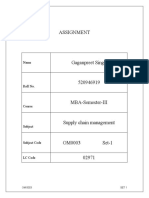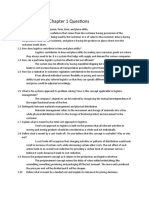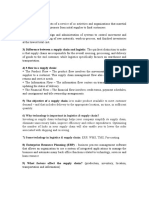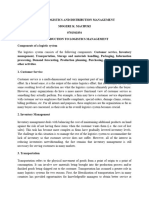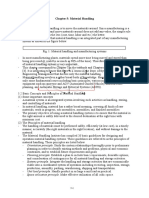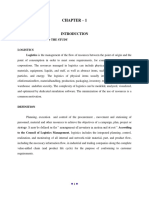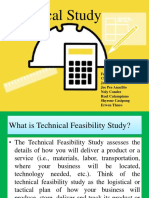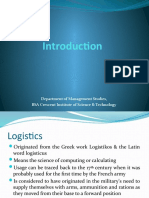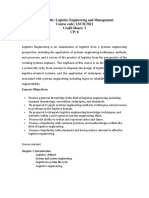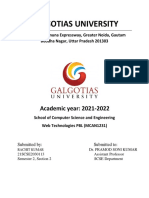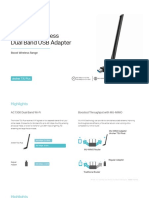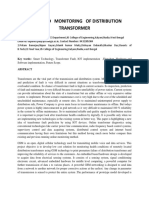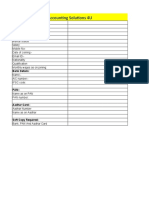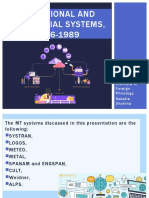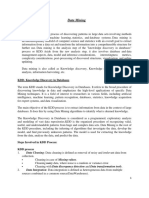0% found this document useful (0 votes)
224 views4 pages10 Elements of Logistic Management
The document outlines 10 elements of logistics management:
1) Logistics and maintenance support planning which involves interactive planning for logistics requirements.
2) Logistics, maintenance, and support personnel which covers those involved in providing support.
3) Training and training support which includes resources for initial and ongoing training.
4) Supply support including spare parts, repair parts, and associated inventories.
5) Computer resources to support logistics functions and maintenance activities.
Uploaded by
KosasihCopyright
© © All Rights Reserved
We take content rights seriously. If you suspect this is your content, claim it here.
Available Formats
Download as DOCX, PDF, TXT or read online on Scribd
0% found this document useful (0 votes)
224 views4 pages10 Elements of Logistic Management
The document outlines 10 elements of logistics management:
1) Logistics and maintenance support planning which involves interactive planning for logistics requirements.
2) Logistics, maintenance, and support personnel which covers those involved in providing support.
3) Training and training support which includes resources for initial and ongoing training.
4) Supply support including spare parts, repair parts, and associated inventories.
5) Computer resources to support logistics functions and maintenance activities.
Uploaded by
KosasihCopyright
© © All Rights Reserved
We take content rights seriously. If you suspect this is your content, claim it here.
Available Formats
Download as DOCX, PDF, TXT or read online on Scribd
/ 4



